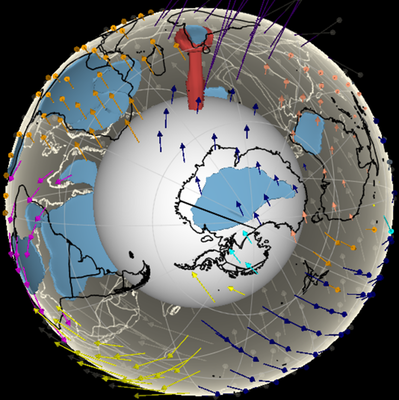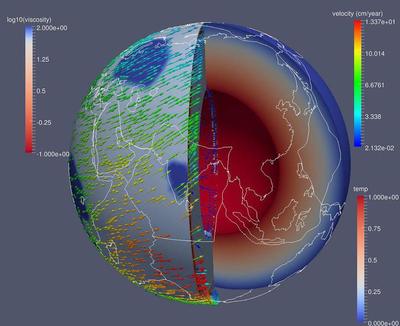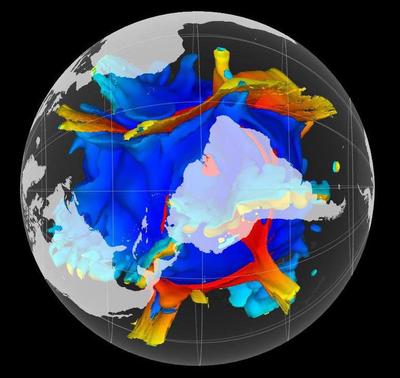Geodynamics
We are trying to understand how the deep mantle talks to the lithosphere; how big a role the mantle plays in explaining processes that we see on the Earth’s surface such as mountain building, plate motions, earthquakes, deformation. Some of the current research topics include:
-
Understanding the dynamics of the Indian plate: The Indian plate on its northward journey from the southern hemisphere accelerated at ~65-63 Ma before it collided with Eurasia. The cause behind this sudden acceleration is still debatable. What is also debatable is the actual thickness of the Indian craton, whether the cratonic lithosphere underneath India is indeed much thinner than usual cratonic lithosphere and what could have caused this phenomenon. Using time-dependent convection models we are looking into the reasons behind these.
-
Stability of cratons: How these billion year old continental rocks have survived for so long is still not known. Using instantaneous and
time-dependent models we are trying to understand the reasons behind cratons' long-term survival. -
Indian Ocean Geoid Low and its Evolution: How did the lowest geoid anomaly on Earth came into being? While we now understand the reason behind that anomaly how it originated is not known. Using mantle convection models driven by reconstructed plate velocities and past temperature anomalies in the oceanic lithosphere we trying to understand the evolution of this enigmatic geoid anomaly.
-
Understanding deformation in diffuse plate boundary zones: Can we explain the observed deviatoric stresses and strain rate patterns in regions of complex deformation such as the India-Eurasia collision zone? What is the relative contribution between lithospheric buoyancy and mantle circulation in these regions? Using mantle convection models coupled with topography and lithosphere structure we are addressing this plate-mantle coupling problem.
-
Role of composition in mantle dynamics: While velocity variations in tomography models are mostly ascribed to temperature/density variations, many seismic tomography images of complex deformational regions, such as Tibet and western US, show short wavelength variations in velocity. These may not be solely due to temperature variations; composition may play a role here. Can we quantify the role of composition in affecting velocities in these regions? We are currently investigating the contribution of compositional anomalies in the western US.


